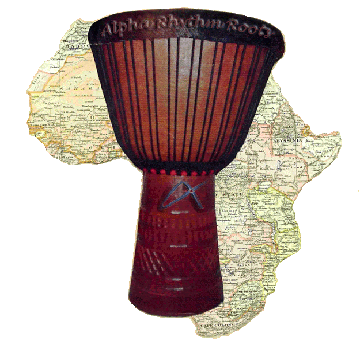Learning how to play the Djembe drum
- alpharhythmroots

- Jan 29, 2021
- 3 min read
Transferred from an older blog: Original post date by Alpha (Administrator) on 06/23/11
This article assumes that one is unable to travel to West Africa to learn directly from there, immersed in the culture. That is really the short and best answer.

The very first thing to do if you intend to learn how to play a musical instrument is to purchase an instrument that will allow you to learn properly. Learning how to play the Djembe is no exception! A professional sized authentic Djembe will allow you to play all the different basic notes (Base / tone / and slap). Small Djembe that you can almost squeeze under your armpit won't do it! Visit the Djembe advice blog article to find out the process of purchasing an authentic Djembe and not a Djembe look-alike. - You can also read the other article in our blog entitled: Choosing the right authentic Djembe for you.

Authentic Djembe drum
Another decision you have to make is, whether or not you should participate in drumming circles and Djembe class at the same time. One is well advised not to attend drumming circles as a beginner. You can attend drumming circles for years and still not acquire the basic of Djembe drumming, while your hands and fingers will hurt from not hitting the drum properly. When you attend Djembe class with a qualified teacher, you learn how to play the instrument with confidence and make progress in every class, while learning about Mandingue history and culture. Like any other musical instruments in the world, and beyond all misconceptions about the Djembe, it is almost impossible to learn how to play it on your own, even if you already are a professional percussionist musician!
The third thing to consider is to make sure your teacher is qualified to teach you how to play the Djembe drum in an ensemble. Try to learn from as close to the source of this musical tradition as possible, and make sure base drums (Doundoumba, Sangban, Kenkeni), are played together with Djembes. The internet is now invaded by instruction videos and rhythm notations by individuals who have not studied Djembe drumming. If you are new to Djembe drumming, I strongly recommend you stay away from ALL internet instruction material and books. There are a few great books that have been written by Mandingue Master drummers to teach you further after you acquire the core, and understand the dynamic of the ensemble. When you reach an intermediate level through practicing in your class, many of the videos that you will find on youtube and the internet about Djembe drumming will look so fake that they will make you smile. You will then be able to spot anything that is fake immediately. At this point you will have sufficient knowledge to search and find very good footage and videos that can help you improve and expand your knowledge of Djembe drumming (Yes, they are out there too..).
The next thing to consider is the amount of practice you will have to put into learning and understanding the Djembe drum musical instrument. Like any other musical instrument, you have to do the dirty work ! Educating your fingers, hands, arms, and general body movement only comes with regular practice. Just like when one learns how to play the guitar, strings pinching technique don't come over night, and require regular practice.
Finally, I recommend you choose one style of playing and stick to it until you reach intermediate to advanced level. At this point you will be able to expand your general knowledge of the Mandingue repertoire by exploring different style from different countries / regions. Remember that whether you learn from the rhythm repertoire of Guinea, Mali, Senegal, Burkina-Faso, Ivory coast, or Senegal, the same piece of music (rhythm) may be found in more than one of these countries, with some minor differences, sometimes under different names, depending on the language. There is no right or wrong version of the same rhythm, only countries or area interpretations. Whenever taking a class or workshop, make sure you ask the origin of the rhythm you are being taught together with its meaning.
Time to practice!


Comments